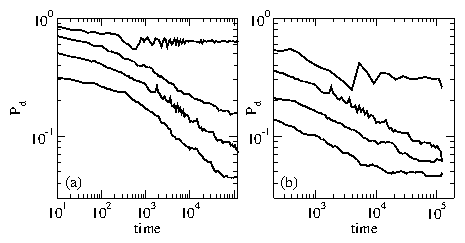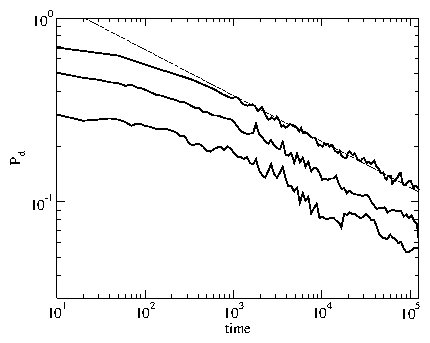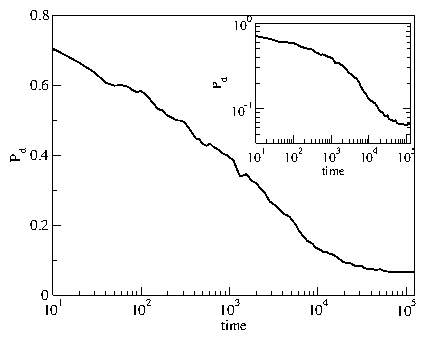 Figure 8:
(a) Pd(t) for the same system
as in Fig. 6 with L = 36 and A*=6 for varied disorder strength.
From top to bottom, A*/fp = 0.7, 1.25, 2.0,
and 3.0.
(b) Pd(t) for the same system in (a) for varied
ac frequencies.
From top to bottom, ω/3×10−4 = 0.1, 0.25, 1, and 10.
Figure 8:
(a) Pd(t) for the same system
as in Fig. 6 with L = 36 and A*=6 for varied disorder strength.
From top to bottom, A*/fp = 0.7, 1.25, 2.0,
and 3.0.
(b) Pd(t) for the same system in (a) for varied
ac frequencies.
From top to bottom, ω/3×10−4 = 0.1, 0.25, 1, and 10.
|





